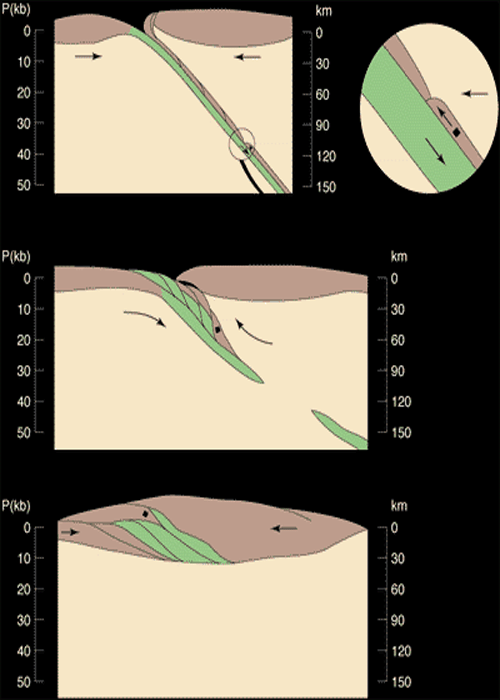From Continental Collisions Meteor Impacts and Star Dust
In the last 20 years scientists have exposed new sources of diamond. Continental collisions -- a result of plate tectonics -- can subject slices of a crust to enormous burial and uplift. In Kazakhstan, for instance, diamonds formed in buried crust that returned to Earth's surface. Meteor impacts produce immense pressures, and diamonds can be created and sprayed among the impact debris. Meteorites also knowledge impacts themselves and can contain diamonds. And the most ancient meteorite material contains star dust, the bits and pieces of the death of stars. Some of this star dust is very tiny bits of diamond, just big enough to be crystals and older than the solar system itself.
Very small "microdiamonds," averaging only 12 micrometers across, were discovered during diamond examination in a region called the Kokchetav Massif, in northern Kazakhstan, in large slices of metamorphic rock that must have been pushed at least 120 kilometers deep into Earth and returned. Discovery of this process, termed ultrahigh pressure (UHP) metamorphism, has revolutionized ideas about and interest in what can occur to Earth's crust. In recent times scientists have found traces of diamond around meteor impacts. At the 35-million-year-old Popigai crater in Siberia, graphite transformed into micro diamond aggregates up to 1 centimeter across. It is now suspected that diamonds form in mainly major impacts, becoming a new indicator of ancient cosmic collisions. In 1987, microscopically small fragments of diamond, called "nanodiamonds," were improved from meteorites that predate the solar system. New studies indicate that they formed more than 5 billion years ago in flashes of radiation from dying red-giant stars into nearby clouds of methane-rich gas. The process is fundamentally the same as the new process for growing synthetic diamond called CVD -- chemical vapor deposition.

The diagrams above show the formation of a UHP terrene that can yield diamonds. At top, the down-going sub ducted ocean crust (green) has a thin covering of sediment (gray) that is sheared off and driven upward (inset), apparently caused by the continental collision (middle) that squeezes the diamond-bearing metamorphic rocks back into the crust (bottom).
<< Back